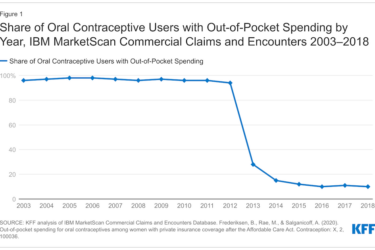Pay for performance (P4P) is often touted as one of the best ways to improve health care quality. In most P4P programs, health plans pay physicians and hospitals more if they meet certain quality targets.

The federal Centers for Medicare & Medicaid Services has adopted a version of P4P for hospitals called Hospital Value-Based Purchasing, which we covered last year. CMS has a similar program for doctors, called the Physician Quality Reporting System.
In theory, P4P and VBP give commercial and government health insurers a way to incentivize physicians and hospitals to deliver services designed to improve patient outcomes. Physicians can earn more for following patient-care guidelines, for example.
P4P and VBP are thought to help counteract the perverse incentives built into fee-for-service payment in which the more care physicians and hospitals deliver, the more they get paid.
But a recent report raises questions about CMS’ value-based purchasing program and pay for performance in general. This report is more than a critique of VBP and P4P. It is an excellent primer on what’s wrong with how commercial and government insurers pay for health care and how their methods of payment are not designed to produce the most desirable outcome: better patient health.
The report (PDF), by Harold D. Miller, president and CEO of the Center for Healthcare Quality and Payment Reform, “Measuring and Assigning Accountability for Healthcare Spending,” thoroughly explains the problems with P4P, VBP, and fee-for-service. Sabriya Rice in Modern Healthcare covered the report well as did Cheryl Clark in HealthLeaders. Clark called the nation’s current payment formulas “Kafkaesque.”
Health care journalists would do well to read this report because it’s an impressive undertaking that explains how the U.S. health care system works, what’s wrong with how we pay for care, and how some payment reform methods could fix these flaws. The report would serve as a useful guide for any articles on payment reform.
In discussing the fundamental problems with current spending methods, for example, Miller, an adjunct professor of public policy and management at Carnegie Mellon University, names and explains six of them as follows:
- Many patients and many aspects of spending are not attributed to any physician or other provider.
- The physician or organization that is attributed spending for a patient may not have control or influence over many of the services that a patient received.
- Many providers are not attributed the spending that they can control.
- No distinctions are made between necessary and avoidable services.
- Comparisons of spending across providers do not adequately adjust for differences in patient needs.
- Comparisons of spending do not adequately adjust for structural differences in costs among providers.
Later in the report, Miller gives five examples of payment methods that would address these flaws: bundled payment, warranteed payment, episode payment for a procedure, condition-based payment, and global payment.
Miller clearly explains some of the biggest flaws in how insurers pay for most care. “Some services that could lower overall spending aren’t paid for adequately or at all,” he writes. “For example, Medicare and most health plans don’t pay physicians to respond to a patient phone call about a symptom or problem, even though those phone calls can avoid far more expensive visits to the emergency room. Medicare and most health plans won’t pay primary care physicians and specialists to coordinate care by telephone or email, yet they will pay for duplicate tests and the problems caused by conflicting medications.”
Image by Colin Dunn via flickr.
He also explains why physician practices have no incentive to care for high-risk patients. Health plans typically don’t pay for physicians to hire staff to educate these patients on self-care management even if such education would help avoid an expensive inpatient stay, he writes.
And, more seriously, he writes that under fee for service, all providers are penalized financially for reducing unnecessary services. “Most fundamentally, under the fee for service system, providers don’t get paid at all when their patients stay well.”
In other words, our current payment methods do not do what any health policy expert would want them to do: provide incentives to keep patients healthy.









